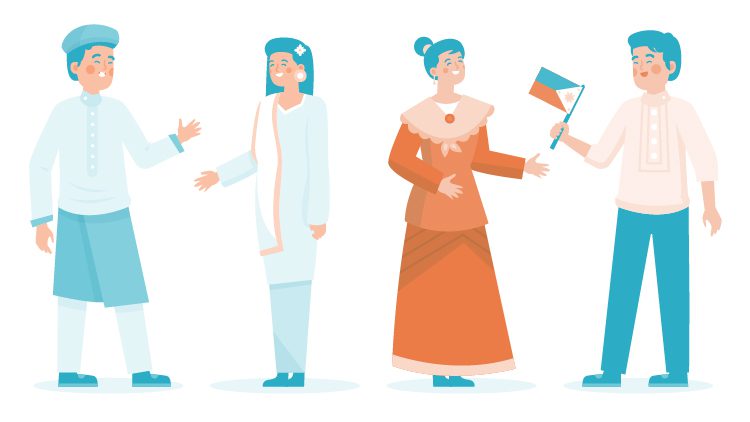
Background on Thai and Filipino Culture
Thai and Filipino cultures are rooted in rich traditions and practices passed down through generations. These two Asian countries may have some similarities, but they also have distinct differences that set them apart. The Thai is predominantly a Buddhist country, whereas the Philippines is a predominantly Christian country. The official language of Thailand is Thai, whereas the Philippines has two official Filipino and English languages.
Thai food is known for its vibrant and spicy flavors, while Chinese, Spanish, and Malay cuisine influence Filipino cuisine. Street food is a staple in Thailand and the Philippines, where visitors can try delicious and affordable dishes from local street vendors. The beach culture in both countries is also worth mentioning, with Thailand having fantastic beaches such as Koh Samui and Phuket. At the same time, the Philippines boasts some of the most secluded and gorgeous beaches, like Boracay and El Nido.
Whether you are a digital nomad or a beach lover, both Thailand and the Philippines offer lively nightlife and plenty of opportunities to explore their respective countries' cultures and traditions. However, one of the main challenges for travelers in these countries can be the language barrier, but this can easily be overcome by learning a few basic phrases and taking advantage of the warm and friendly locals who are always willing to help.
Similarities between Thai and Filipino traditions
Although Thai and Filipino cultures may seem vastly different at first glance, there are many similarities when it comes to their traditions. One similarity is their emphasis on hospitality and respect for guests. Both cultures emphasize offering guests warm welcomes and providing comfort and amenities during their stay.
Another shared tradition is the importance of family and community. Families are considered the cornerstone of society in both cultures and extended family members are often involved in daily life. Filipinos and Thais also value their community, reflected in their celebrations and festivals. Both cultures hold annual events bringing together locals and visitors, showcasing their rich history and unique customs.
Lastly, Thai and Filipino cultures have similar attitudes toward religion and spirituality. Buddhism is the predominant religion in Thailand, while Christianity is the main religion in the Philippines. However, both cultures value inner peace and mindfulness, often expressed through meditation and prayer.
While Thai and Filipino cultures may have their differences, the shared traditions make them truly fascinating and worth exploring. Whether experiencing the mouthwatering flavors of Filipino food, lounging on a white sand beach in Thailand, or getting lost in a secluded beach paradise, both cultures offer a wealth of experiences that will leave a lasting impression.
Differences in cuisine
Thai and Filipino cuisines offer a fascinating comparison regarding their flavors, ingredients, and cooking techniques. While neighboring countries influence both cuisines, their distinct characteristics set them apart.
Thai cuisine is known for its bold and vibrant flavors, with dishes that balance spicy, sour, sweet, and salty tastes. Thai cuisine heavily uses lemongrass, chili peppers, coconut milk, and fish sauce. Rice is a staple in Thai meals, often served alongside various meat or vegetable dishes.
On the other hand, Filipino cuisine is a melting pot of flavors influenced by Spanish, Chinese, and Malay cooking. Filipino dishes are characterized by using vinegar, soy sauce, garlic, and various spices. Adobo, Sinigang, and Pancit are some of the iconic Filipino dishes. Rice is also a staple in Filipino cuisine, but it is often served with stews and grilled meats.
Thai and Filipino cuisines offer a wide range of street food options that showcase each culture's rich flavors and culinary creativity. From Pad Thai and Som Tam in Thailand to Balut and Halo-Halo in the Philippines, visitors can indulge in a gastronomic adventure through the streets of these countries.
Despite their differences, Thai and Filipino cuisines share a common goal - to satisfy the taste buds and provide a unique culinary experience. Whether you prefer the fiery and aromatic flavors of Thai cuisine or the savory and flavorful dishes of Filipino cuisine, both will surely leave you craving more.
Religion and beliefs
Both Thai and Filipino cultures have deeply rooted beliefs in spirituality and religion. However, there are notable differences in their practices and beliefs.
Buddhism is the dominant religion in Thailand, with almost 95% of the population following it. The influence of Buddhism can be seen in many aspects of Thai life, including architecture, art, and social customs. Thai people believe in karma, the concept that one's actions in this life will determine their future life. They also participate in religious ceremonies such as merit-making, offering food to monks, and visiting temples.
On the other hand, Roman Catholicism is the primary religion in the Philippines, brought by the Spanish colonizers in the 16th century. The Philippines is known as Asia's most significant Christian country, with around 80% of the population following the Catholic faith. Filipinos believe in the importance of family, prayer, and devotion to God. Religion plays a significant role in their daily lives and practices, such as attending mass and observing religious holidays like Christmas and Holy Week.
Both cultures also place a high value on education and the English language. English is widely spoken and is the primary medium of instruction in schools. However, there are still differences in their approaches to education. In Thailand, rote memorization is emphasized, while critical thinking and creativity are stressed in the Philippines.
Both cultures deeply respect spirituality and religion but express it uniquely.
Family values and structures
In Thai and Filipino cultures, the family holds a central place and is considered the foundation of society. However, the two cultures have some differences in family values and structures.
In Thai culture, the concept of family extends beyond just immediate family members. Extended family members, such as grandparents, aunts, and uncles, play an essential role in the upbringing of children. Respect for elders is deeply ingrained in Thai society, and children are taught to honor and care for their parents and grandparents. The Thai people have a strong sense of filial piety, reflected in their families' close-knit nature.
In Filipino culture, family ties are also highly valued. The Filipino term for family, "pamilya," encompasses immediate family members, extended family, and close friends. Filipino families are known for their strong bonds and support for one another. It is common for multiple generations to live together under one roof, with grandparents often playing an active role in the upbringing of their grandchildren.
Thai and Filipino cultures emphasize the importance of unity and support within the family unit. However, there may be slight family structure and dynamics variations due to cultural and regional differences within each country. Family values remain a significant aspect of both cultures, highlighting the importance of strong familial relationships and the bonds that tie people together.
Holidays and celebrations
Holidays and celebrations play a significant role in Thai and Filipino cultures, showcasing their rich history and unique customs. One of the most important holidays in Thailand is Songkran, the Thai New Year. It is celebrated with water fights and the pouring of scented water on Buddha images, symbolizing purification and the washing away of bad luck. Loy Krathong is another significant festival where people float decorative lotus-shaped rafts on rivers and lakes to pay respect to the water spirits.
In the Philippines, Christmas is the biggest and most beloved holiday. Filipinos celebrate as early as September with colorful parades, Christmas lanterns, and joyful caroling. They also have the Simbang Gabi, a series of nine dawn masses leading up to Christmas Eve. Other vital celebrations include Easter, where the crucifixion of Jesus Christ is reenacted, and the Feast of the Black Nazarene, a religious procession in Manila that draws millions of devotees.
These holidays and celebrations are an integral part of the cultural fabric of Thailand and the Philippines, showcasing their traditions, spirituality, and the values they hold dear. Whether participating in a water fight during Songkran or attending a vibrant Christmas parade, these festive occasions offer a glimpse into these cultures' vibrant and joyous spirit.
Gender roles
In Thai culture, traditional gender roles are deeply ingrained, with men generally holding more power and authority. Women are often expected to take care of the home and children and are not typically seen in leadership or management positions. However, this is slowly changing as more women enter the workforce and become leaders in their fields.
Filipino culture has a similar expectation for women to take on domestic responsibilities, but women are also commonly seen as equal partners in marriage and parenting. Women have historically been active in politics and activism, with many influential female figures leading social justice and human rights movements.
Both cultures have had a long history of valuing men over women, but progress is being made toward greater gender equality. As societies continue to evolve, traditional gender roles are becoming less rigid, and women are gaining more opportunities to lead and succeed in all aspects of life.
Frequently Asked Questions
Thai and Filipino traditions share several commonalities due to their geographical proximity and historical interactions. Some similarities include strong family values, respect for elders, and vibrant festivals celebrating their cultural heritage.
Both Thai and Filipino cuisines are known for their rich flavors and use of fresh ingredients. They often combine sweet, sour, and savory elements, creating delightful dishes that showcase the region's unique culinary identity.
Both Thai and Filipino cultures have deeply rooted spiritual practices. Thailand is predominantly Buddhist, and the Philippines is primarily Catholic. However, both cultures embrace spirituality and religious ceremonies as integral to their daily lives.
Songkran in Thailand and Sinulog in the Philippines are popular festivals celebrated enthusiastically. Songkran marks the Thai New Year with water-splashing festivities, while Sinulog honors the Santo Niño with colorful processions and dance.
Thai and Filipino traditional clothing often feature bright colors and intricate patterns reflecting their cultural heritage. In Thailand, the traditional dress is the "chut thai," In the Philippines, the "barong Tagalog" is a well-known conventional attire.
https://www.universal-translation-services.com/a-comparison-of-traditions-thai-and-filipino-similarities/


Comments
Post a Comment